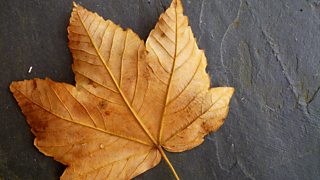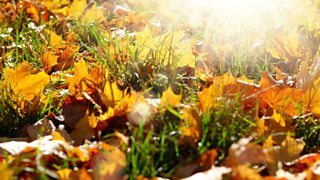Six beautiful words to describe autumn
It’s that time of year again: the trees are turning brown and shedding their leaves, pumpkin is on the menu once more, we’ve pulled our sweaters out from under the bed and Strictly Come Dancing is back on the box. We’re saying goodbye to summer and hello to autumn. If you speak the Queen’s English that is. Other parts of the world have their own wonderful ways of referring to the season, and here’s a handful...

1. Fall

We all know the Americans came up with this one, right? Wrong! Fall is largely considered to be an American, but in fact it’s a very old word for the season which originated in England in the 16th Century or earlier – although the English adopted the word autumn from the French automne in the 15th or 16th Century, it didn’t gain traction until the 18th Century. Fall was originally short for "fall of the year" or "fall of the leaf", but it had largely become the snappier, one-word version by the 17th Century - long before American English had been established. So while the term is now widely used across the pond, it is not actually American in origin. We’ll take the credit for that one, thanks!
2. Haust

The Swedish word for autumn is höst, the Danish use høst and the German variation on the word is Herbst – all of which are derived from the Old Norse word haust, meaning "to gather or pluck" – still used by the Norwegians today.
In fact, until the 16th Century we were in the same club. The months between August and November, when the farmers gathered their crops for winter storage, were referred to simply as harvest. But, as more of the population swapped working the land for living in towns, the word lost its reference to the time of year and came to refer solely to the act of reaping crops.

3. La rentrée

The French take their summer break very seriously. Schools are closed, most businesses (unless involved in the tourist industry) adopt shorter opening hours or simply shut up shop for the whole of August, and every man and his dog head off on their hols. À la rentrée or the return is the phrase commonly used to describe the beginning of autumn, when students are back to school, businesses reopen and tanned politicians return to parliament. This period of frantic activity in September, when life returns to normal, is known by the same name in Italy too, in the form of il rientro.
4. Risshuu

In Japan, risshuu means the first day of autumn. And it’s just one of many words the Japanese have to describe the season, which is a popular motif in haiku poetry. Shuuki is the autumn air, shuushoku is a word to describe the autumn colours and aki no koe refers to autumn's voice, which incorporates all the sounds of the season: the wind rustling dry leaves, rain hitting the ground or chirruping crickets.

5. Harvest Moon
Native Americans traditionally used the lunar cycles to keep track of the passing months and seasons, with each full moon assigned its own name. The moon’s name remained the same until the following new moon. The Cherokee’s October moon was called duninhdi meaning harvest moon. In the Abenaki tribe, September’s moon is skamonkas or corn maker moon, and their October moon is known as penibagos or leaf falling moon. For the Cheyenne tribe, October’s moon had the not-very-catchy but extremely evocative title "freeze begins on stream's edge".

Are people rowdier when there's a full moon?
Is there any biological reason why the moon's phases could affect human behaviour?
6. Backend
A little bit of northern dialect to end on. And no, it’s nothing to do with the human posterior. In various spots in the north of England and Scotland, autumn is commonly referred to as the backend, literally meaning the latter part of the year. In Lancashire and Yorkshire, a particularly wet and blustery day might be described as backendish.

More from 成人快手 Radio 4
-
![]()
How many trees can you identify from their autumn leaves?
-
![]()
Our guide to keeping busy, active and occupied as cold weather and clouds creep up on us.
-
![]()
Quirky facts about the turn of the season.
-
![]()
Wrap up warm, grab that trowel, and enjoy the dazzling display of autumn colours.




